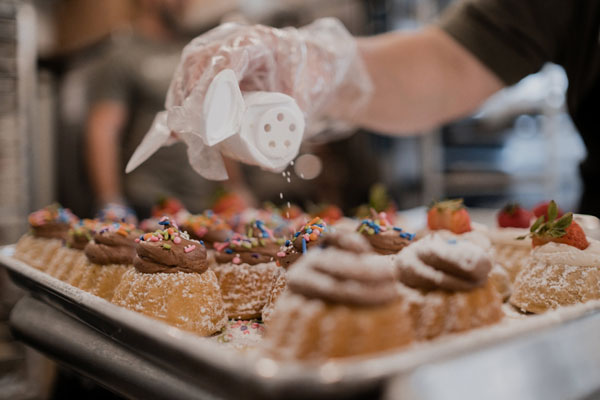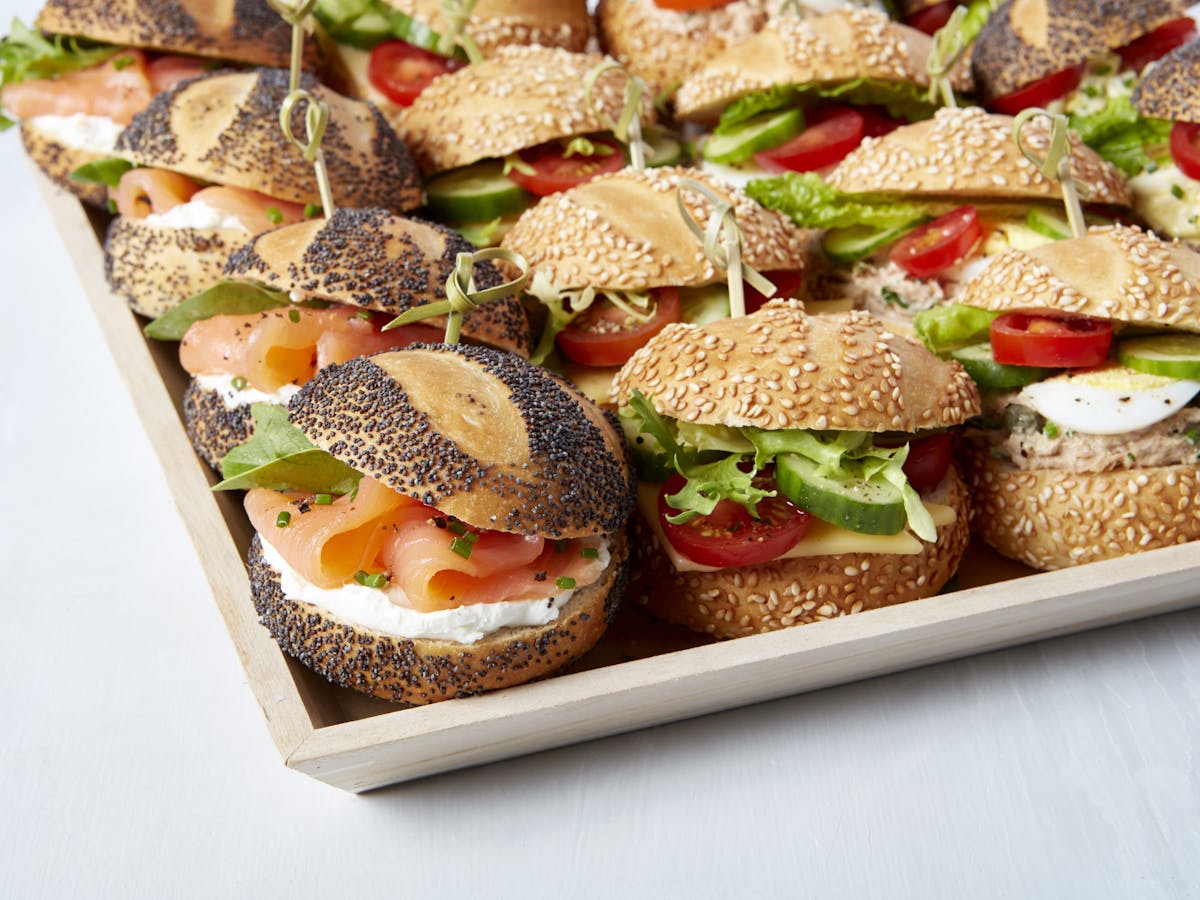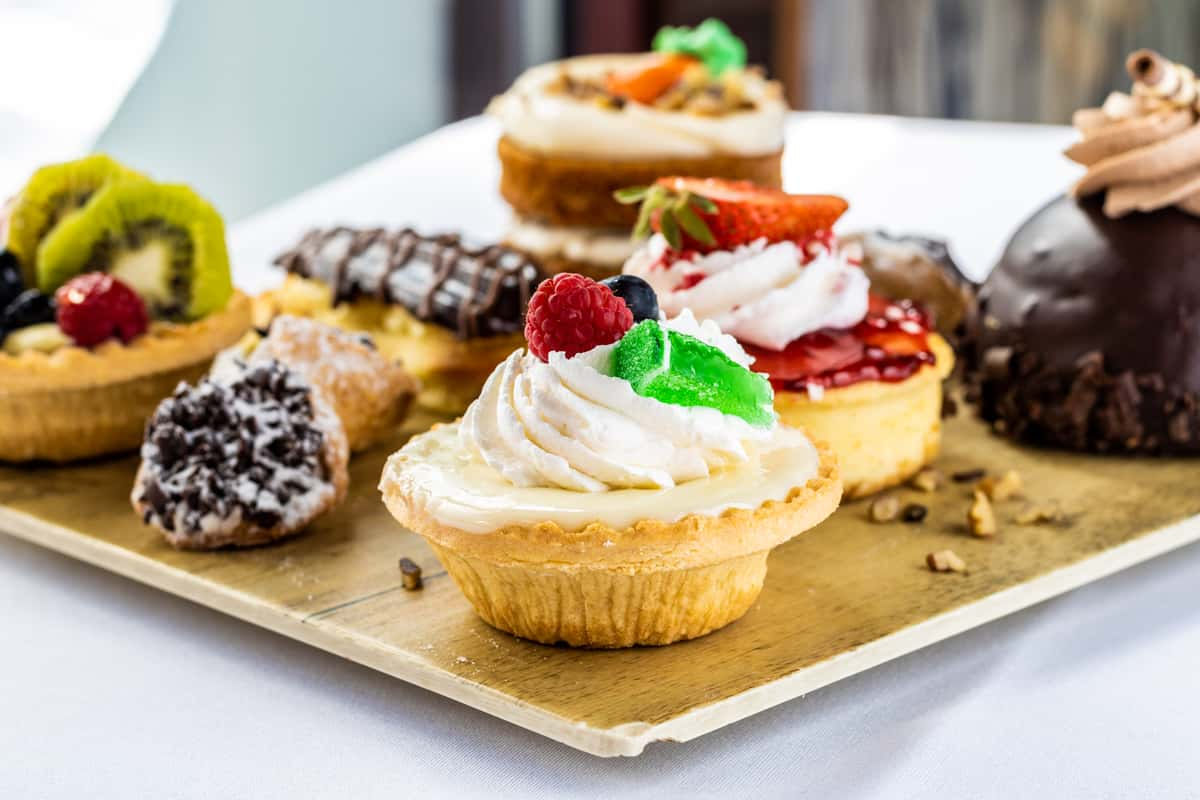Distinct Birthday Party Maddington Concepts for a Memorable Occasion
Distinct Birthday Party Maddington Concepts for a Memorable Occasion
Blog Article
Understanding the Art of Bakery Products: From Freshly Baked Breads to Alluring Pastries and Finger Foods
From the science behind the best loaf of bread, where fermentation and gluten development play critical duties, to the finesse needed for creating layered breads, each aspect reveals a compelling narrative of workmanship. The adaptability of finger foods illustrates how taste and appearance can be artfully incorporated to engage diverse preference preferences.
The Science of Bread Making
At the heart of every loaf of bread exists an interesting interaction of chemistry and biology. The procedure of bread making begins with the combination of flour, yeast, salt, and water-- each active ingredient playing an essential role in the end product. Flour includes proteins, primarily glutenin and gliadin, which, when combined with water, type gluten (Bakery Catering Maddington). This elastic network is essential for capturing gases produced during fermentation.
Yeast, a living microorganism, ferments the sugars present in the flour, generating carbon dioxide and alcohol at the same time. The co2 gas creates bubbles in the dough, triggering it to climb and create a light texture. The temperature and humidity during fermentation substantially influence yeast task and, subsequently, the bread's taste and texture.

Mastering Bread Techniques
How can one accomplish the fragile balance of appearance and flavor that specifies extraordinary bread? Mastering pastry techniques calls for a deep understanding of components, approaches, and the science behind them. Essential to this craft is the choice of high-grade active ingredients-- flour, butter, sugar, and eggs-- each playing an important duty in the final item's flavor and texture.
The technique of lamination, which includes folding layers of dough and butter, creates the desired flakiness in breads like croissants and puff pastry. Accuracy in temperature is important, as butter should stay cool to guarantee optimum layers. Appropriate blending approaches, such as the creaming method for cakes, ensure even incorporation of air and fat, resulting in a light and airy crumb.
In addition, maintaining the ideal moisture levels during cooking can considerably impact the outcome, making sure that breads rise correctly and attain that golden-brown finish. Finally, the art of pastry likewise requires perseverance and method; each effort boosts one's skill and understanding of the elaborate balance required to create tempting breads that thrill the senses. Proficiency in these methods eventually identifies a skilled bread chef from an amateur.
Kinds Of Finger Foods
The globe of cooking delights extends past pastries to include a wide variety of finger foods, which are celebrated for their comfort and adaptability. These bite-sized treats are best for social events, offering a selection of flavors and appearances that deal with varied palates.

On the sweeter side, bite-sized cupcakes and miniature tarts offer other a delightful surface to any meal, attracting those with a pleasant tooth. Additionally, cheese and charcuterie boards serve as an advanced option, enabling guests to personalize their bites with a variety of meats, cheeses, fruits, and nuts.
Taste Profiles in Cooking
Cooking is an elaborate dancing of taste accounts that combines wonderful, mouthwatering, and umami notes to produce a harmonious experience for the taste buds. Understanding these accounts is essential for bakers seeking to raise their developments.
Sweet taste typically functions as the foundation in baked goods, with sugars, fruits, More Bonuses and all-natural sugar enhancing taste depth. Components such as chocolate and caramel introduce complicated pleasant notes that can either control or match other flavors. On the other hand, full-flavored components, frequently located in breads and breads, give equilibrium and contrast. Active ingredients like seasonings, cheeses, and herbs can change a simple dough into a complex taste experience.
Umami, frequently neglected in baking, plays a considerable function in enhancing tastes. Active ingredients such as aged cheeses, fermented products, or even particular nuts add to a tasty deepness that improves overall preference.
Additionally, the interaction of acidity from ingredients like buttermilk or citrus passion can brighten tastes, supplying a rejuvenating counterpoint to sweet taste. By thoughtfully incorporating these taste accounts, bakers can craft items that reverberate with varied tastes buds, producing a remarkable cooking experience. Eventually, understanding taste accounts is crucial to innovation in the globe of baking.
Vital Cooking Devices and Active Ingredients
Understanding flavor accounts in cooking sets the stage for choosing the right tools and active ingredients that assist in the production of outstanding baked products. A reliable set of baking pans-- such as sheet pans, loaf frying pans, and cake frying pans-- is crucial for achieving desired shapes and appearances.
Flour serves as the backbone of most recipes; selecting the right type-- be it bread, all-purpose, or bread flour-- can drastically affect the end result. Baking powder and baking soft drink are important for creating lift in breads and cakes.
In addition, including flavor boosters like vanilla remove, seasonings, and citrus enthusiasm can boost your creations. By making sure access to these basic devices and ingredients, bakers can with confidence start their culinary trip, crafting a varied array of delightful baked goods.
Conclusion
To conclude, the art of pastry shop items incorporates an extensive understanding of both imaginative techniques and scientific principles. Proficiency in bread production, pastry preparation, and finger food discussion reveals the use this link intricate connections between procedures and ingredients. Furthermore, checking out varied flavor accounts enriches the baking experience, while important tools and active ingredients give the foundation for success. Eventually, the captivating world of baking prospers on the unified interaction of science and creativity, causing a myriad of delightful culinary productions.
How can one achieve the fragile balance of structure and taste that defines remarkable pastry? Fundamental to this craft is the choice of high-quality components-- flour, butter, sugar, and eggs-- each playing an essential duty in the last item's flavor and texture.

Comprehending taste accounts in cooking collections the stage for choosing the right tools and active ingredients that facilitate the production of phenomenal baked items. Exploring diverse taste profiles enhances the baking experience, while crucial tools and ingredients offer the foundation for success.
Report this page